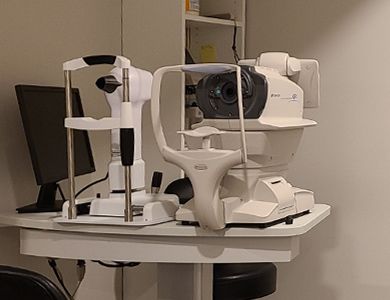Glaucoma Specialist
Glaucoma is the leading cause of blindness and while it’s not curable, with proper treatment, you can prevent further vision loss. With their extensive background in glaucoma diagnosis and treatments, the optometry team at Eye Associates of New York can help. They strive to detect early warning signs of glaucoma and offer comprehensive glaucoma management care to minimize issues. If you have glaucoma or know it runs in your family, schedule an evaluation at this Midtown East, New York City practice. Book either online or over the phone.
Glaucoma Q & A
What is glaucoma?
You have nerves behind your eyes that transmit impulses and signals from the back of your eye (retina) to your brain. These nerves, called your optic nerves, are vital for your vision and seeing clearly.
Glaucoma is an umbrella term for a group of degenerative eye conditions that damage your optic nerve. Usually, glaucoma leads to abnormally high pressure in one or both of your eyes. Over time, you start losing vision and any vision you lose cannot be restored.
Can I tell if I have glaucoma?
Not always. Glaucoma doesn’t generally cause signs and symptoms until you start noticing vision loss. Issues start developing so gradually, most men and women don’t know they have glaucoma until they have an eye exam. Because several types of glaucoma exist, you may have varying signs and symptoms depending on your diagnosis.
Open-angle glaucoma
Even though it’s the most common form of glaucoma, open-angle glaucoma doesn’t cause obvious symptoms. Most men and women who have open-angle glaucoma report noticing patchy blind spots in either their peripheral or central vision. Tunnel vision is also common.
Acute angle-closure glaucoma
This form of glaucoma is known for leading to eye pain and severe headaches. You may also experience eye redness or recurring halos around lights.
You can also experience gradual vision loss due to normal-tension glaucoma, congenital glaucoma, traumatic glaucoma, or secondary glaucoma, to name a few.
How is glaucoma treated?
The first step involves a thorough diagnosis process. Your specialized optometrist at Eye Associates of New York may perform a visual field test to determine if you’ve lost any peripheral vision. They could also suggest an optical coherence tomography (OCT) imaging test to get a comprehensive glimpse of damage to your retina, as well as an eye pressure test.
Once the team better understands how glaucoma is affecting your vision, they put together a tailored glaucoma management treatment plan. This could include prescription eye drops that:
Increase the outflow of eye fluid and reduce pressure (prostaglandins)
Decrease eye fluid production and reduce pressure (beta blockers)
Reduce eye fluid production and increase fluid outflow (alpha-adrenergic agonists)
Sometimes oral medications known as carbonic anhydrase inhibitors can further help decrease eye pressure and preserve your vision. In severe cases, you could need surgery to treat glaucoma. The team at Eye Associates of New York specialize in cutting-edge laser therapy, trabeculectomy, electrocautery, and drainage tube procedures to help your eyes stay as healthy as possible.
If you have glaucoma or know it runs in your family, see what the team at Eye Associates of New York can do to help. Click on the online scheduler to book a visit or call the clinic.












